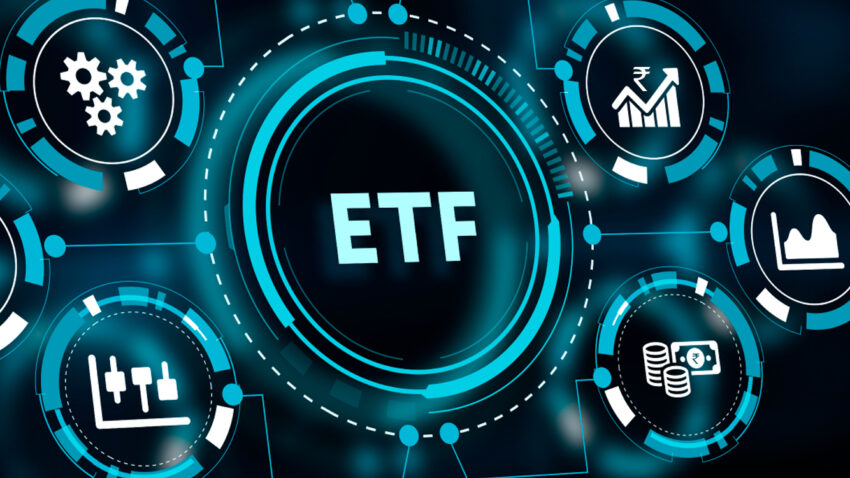Exchange Traded Funds (ETFs) – an instrument that has gained tremendous popularity among investors in recent years. It offers investors a way to invest in a diversified basket of assets, with the added benefit of lower costs, tax efficiency, and ease of trade.
Exchange Traded Funds have seen tremendous growth in the Indian market in the past few years. According to the Association of Mutual Funds in India (AMFI), the assets under management (AUM) of ETFs increased from INR 19,000 crores in March 2015 to INR 1,50,000 crores in May 2021. This growth can be attributed to the rising awareness among investors about the benefits of investing in ETFs, coupled with the growth of the Indian economy and stock market.
For novice investors, ETFs can be an excellent way to get started with investing. However, mastering the art of ETF investing takes a bit more effort and knowledge. Let’s explore some key factors that can help you become a pro at ETF investing.
1. Understand the Basics of ETFs
Before investing in any financial instrument, it is essential to understand its basics. ETFs are essentially a basket of various securities, including stocks, bonds, commodities, or even currencies. They are traded on exchanges like individual stocks, and their value is determined by the underlying assets in the fund.
ETFs trade during share market hours, just like stocks, and their prices change throughout the day. The Net Asset Value (NAV) of an ETF is calculated at the end of each day based on the closing prices of the underlying assets.
2. Decide Your Investment Strategy
Before investing in any ETF, it is crucial to decide your investment strategy. You must decide your investment purpose, your time horizon, and your risk appetite. Once you have this clarity, you can choose an ETF that aligns with your investment goals.
For instance, if you are a long-term investor with a moderate risk appetite, you can consider investing in an equity ETF that tracks the Nifty 50 or the Sensex. On the other hand, if you are a conservative investor, you can consider investing in a debt ETF that invests in government securities.
3. Evaluate the Expense Ratio
One of the most significant advantages of ETFs is their low expense ratio. The expense ratio is the annual fee charged by the ETF provider, and it includes the fund management fee, marketing expenses, and other operational costs. The expense ratio is expressed as a percentage of the AUM.
As an investor, you must compare the expense ratio of different ETFs and choose the one with the lowest cost. A lower expense ratio means higher returns for investors.
4. Evaluate Liquidity and Volume
Liquidity and volume are crucial factors to consider while investing in ETFs. ETFs with higher liquidity and trading volume offer better opportunities for investors to enter or exit at the desired price.
To evaluate liquidity, investors can look at the bid-ask spread, which is the difference between the buying and selling prices of the ETF. A narrower bid-ask spread indicates higher liquidity.
Similarly, investors can evaluate the trading volume of the ETF by checking the daily turnover on the exchange. Higher trading volumes indicate higher liquidity and investor demand.
5. Diversify Your Portfolio
Diversification is a crucial aspect of any investment strategy. Investors should consider investing in multiple ETFs across different asset classes to reduce their portfolio risk.
Investing in a diversified basket of ETFs can help investors mitigate market volatility, reduce the risk of losses, and provide a steady stream of returns.
6. Keep a Long-Term Horizon
ETFs are ideal for long-term investors who can hold on to their investments for a more extended period. While short-term fluctuations in the market can impact the value of an ETF, a long-term investment horizon allows investors to ride out these ups and downs.
Many ETFs have an investment horizon of 3-5 years or more, making them suitable for investors who are looking to build wealth over the long term.
Conclusion
ETFs have revolutionized the way investors invest in the stock market. They offer investors a cost-effective, tax-efficient, and diversified way to invest in a basket of securities.
However, like any other investment, investors must evaluate the pros and cons of ETFs and decide if it is suitable for their investment goals. Investors must also keep themselves up-to-date on market developments and global events that impact the value of their ETF investments.
Investing in the Indian stock market comes with its fair share of risks and rewards. Investors must gauge all the pros and cons before investing their hard-earned money in any financial instrument. The decision to invest must be made after considerable research and analysis. The market is always volatile, and it is essential to tread with caution.
Overall, ETFs can be a valuable addition to any investment portfolio. By understanding the basics of ETFs, evaluating costs, and building a diversified portfolio, investors can master the art of ETF investing and potentially reap significant rewards over the long term.


